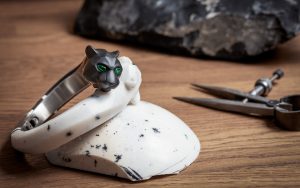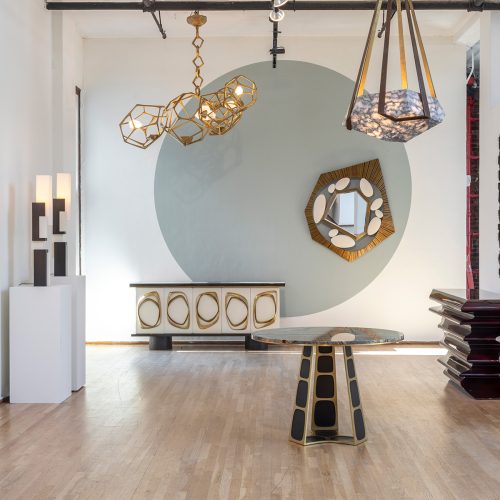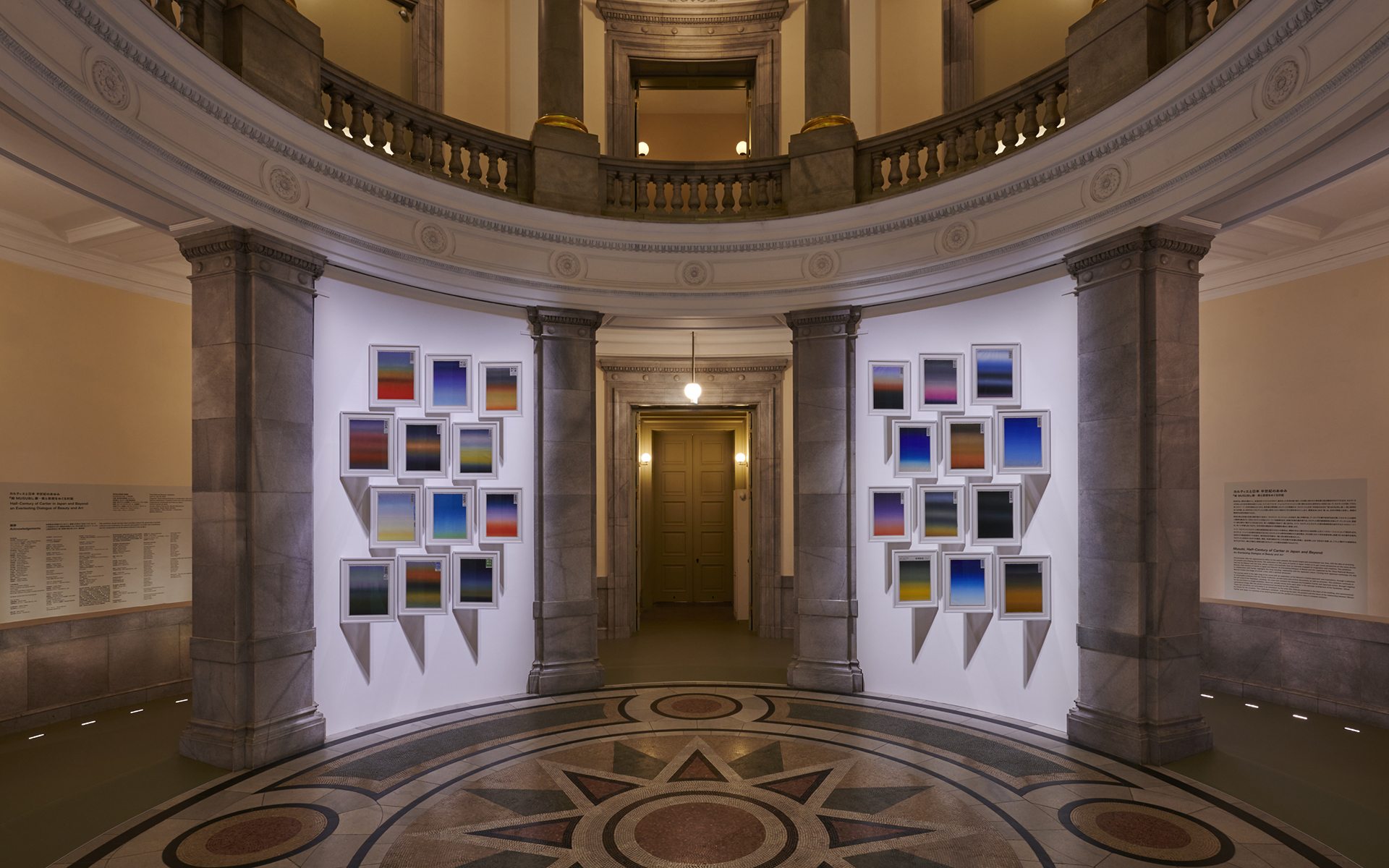

Cartier Presents an Exhibition Celebrating 50 Years in Japan
Mounted at the Tokyo National Museum, the dual-part show features extraordinary jewels, works by Japanese artists, and a special commission by Sho Shibuya
A 50th anniversary is no small occasion, and Cartier is celebrating its half century in Japan with a look to both the past and present. Entitled “Half-Century of Cartier in Japan and Beyond: An Everlasting Dialogue of Beauty and Art,” the show at the Tokoyo National Museum, which runs through July 28, brings together Cartier’s jewelry and the artists of the Fondation Cartier for the first time. The architecture of the Hyokeikan gallery of the museum is particularly suited to the duality of the exhibition with its symmetrical wings that project from its rotunda.
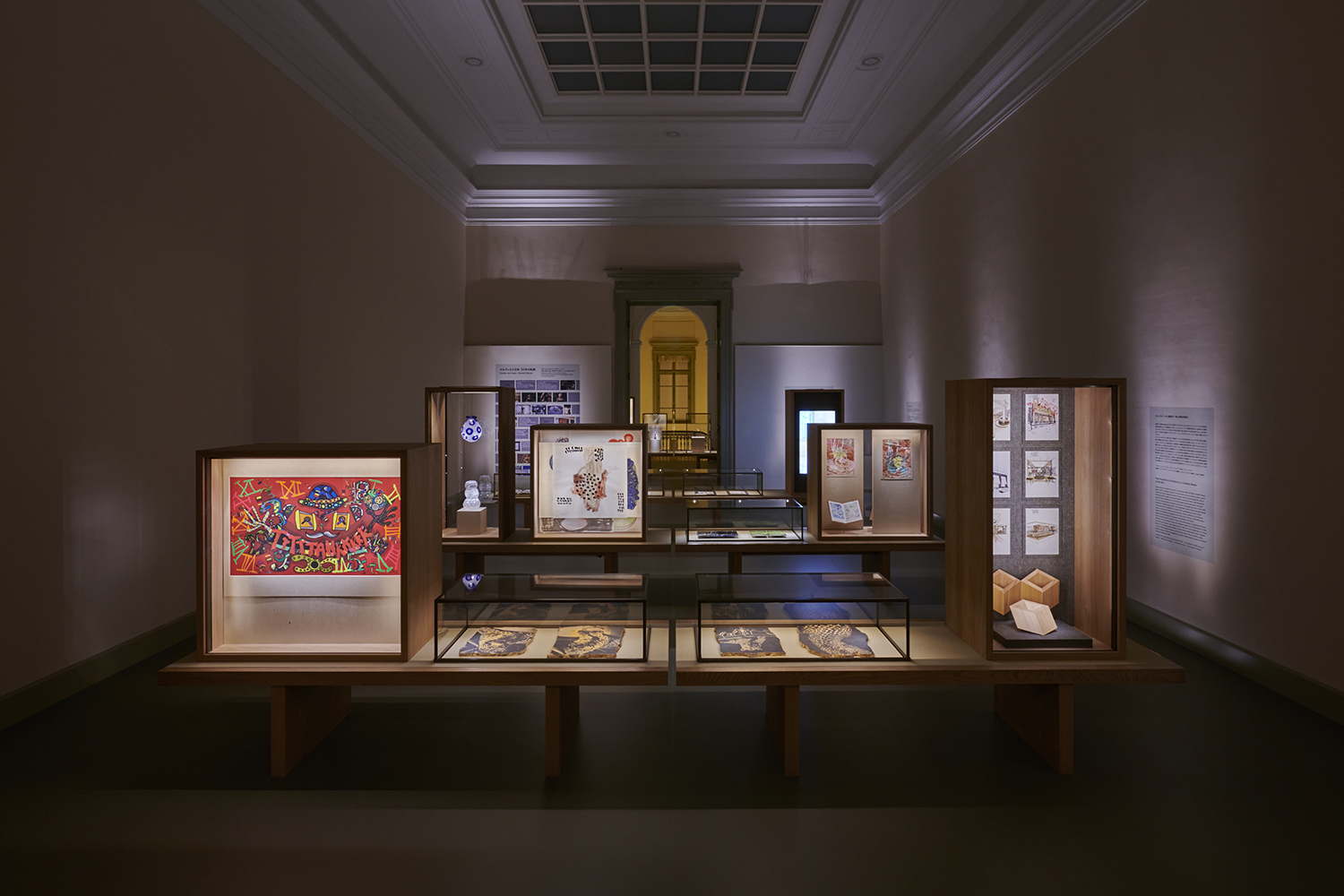
Installation view of “Half-Century of Cartier in Japan and Beyond: An Everlasting Dialogue of Beauty and Art" at Tokyo National Museum. Photo: Courtesy Cartier
That central space welcomes visitors with a special commission for this event by Sho Shibuya. The artist, known for his paintings on New York Times covers that gained popularity through social media during the pandemic, created a series of 50 new works as an homage to Utagawa Hiroshige‘s 53 Stations of the Tokaido. “For this contemporary tribute, Shibuya chose to travel to all 47 prefectures in Japan, painting a view of the sky on the front page of the local daily newspaper each day, offering both a timeless vision and a contemporary perspective,” says Hélène Kelmachter, who co-curated the exhibition with Masato Matsushima. The display of the works on an angle allows the viewer to experience both the painting on the front as well as a sense of the place and day by the news stories still visible on the reverse. The artist explains, “It’s very fascinating to experience and to talk with the local people too, completely different character, people from each region.”

Large portique mystery clock, (1923). Photo: Nils Herrmann; Courtesy Cartier

Necklace, Cartier Paris, special order, 1928, restored 1999-2002. Photo: Nick Welsh; Courtesy Cartier
But this impressive installation is only the starting point of this fascinating Cartier exhibition. The portion exploring the history between Cartier and Japan includes over 200 pieces of jewelry and precious objects from the Cartier Collection, some of which date back to the 1850s. A number of items are on loan from private collections—including several from Louis Cartier.
“Louis Cartier was nurtured by the movement of Japonisme, and it is therefore not surprising that he turned his attention to the culture of the Rising Sun, gathering a large collection of Japanese objects and assembling an abundant library of books on Japanese art and the grammar of forms,” says Kelmachter. “By making these collections available to the Maison’s designers, his intention was not to invite them to draw inspiration from them, but rather to encourage them to nurture them in order to create new forms, concise and abstract, and invent a vocabulary which, while echoing elements of Japanese culture, contributed to laying the foundations of the major elements of the maison’s style.”
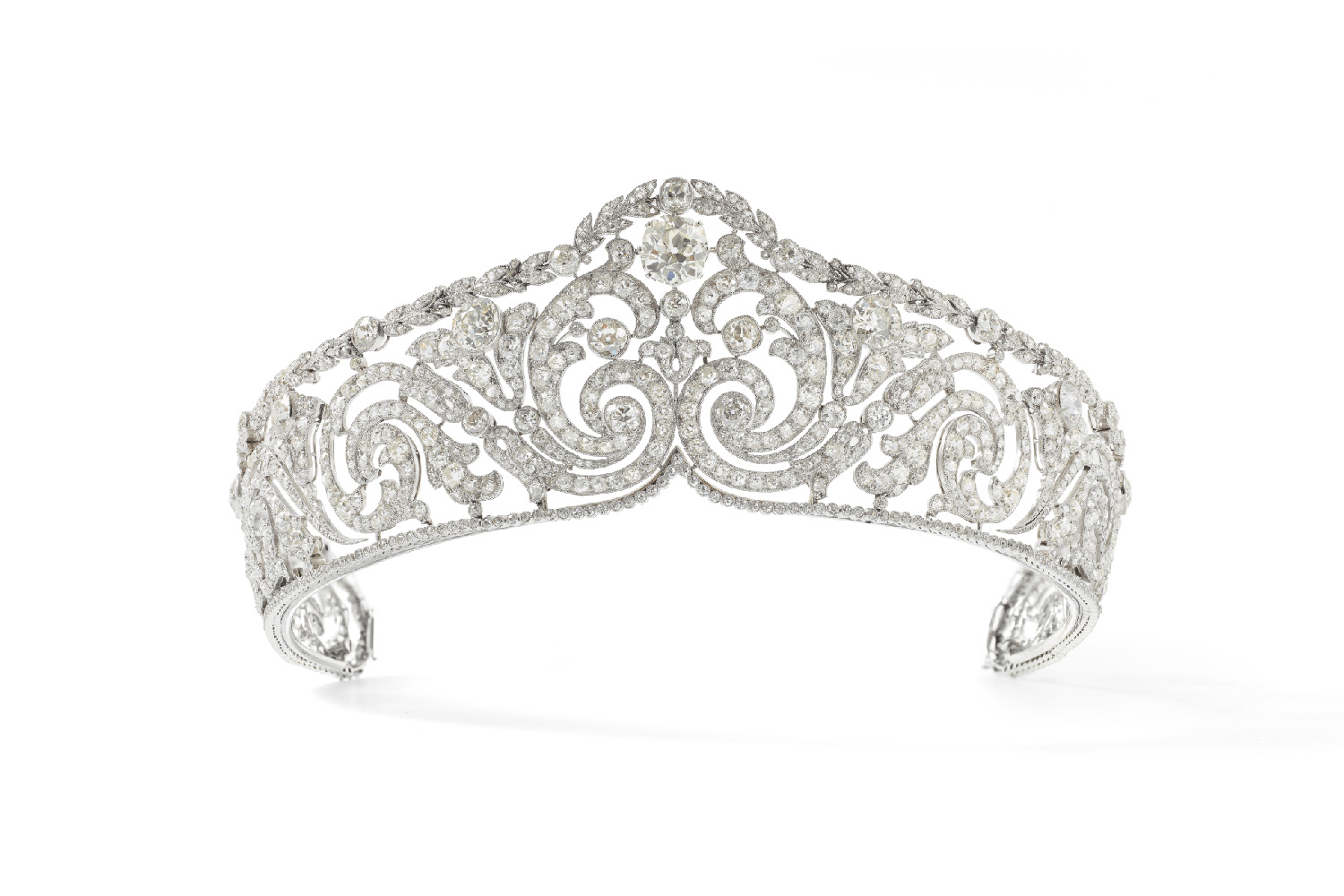
Scroll tiara, Cartier Paris, (1910). Photo: Nils Herrmann; Courtesy Cartier
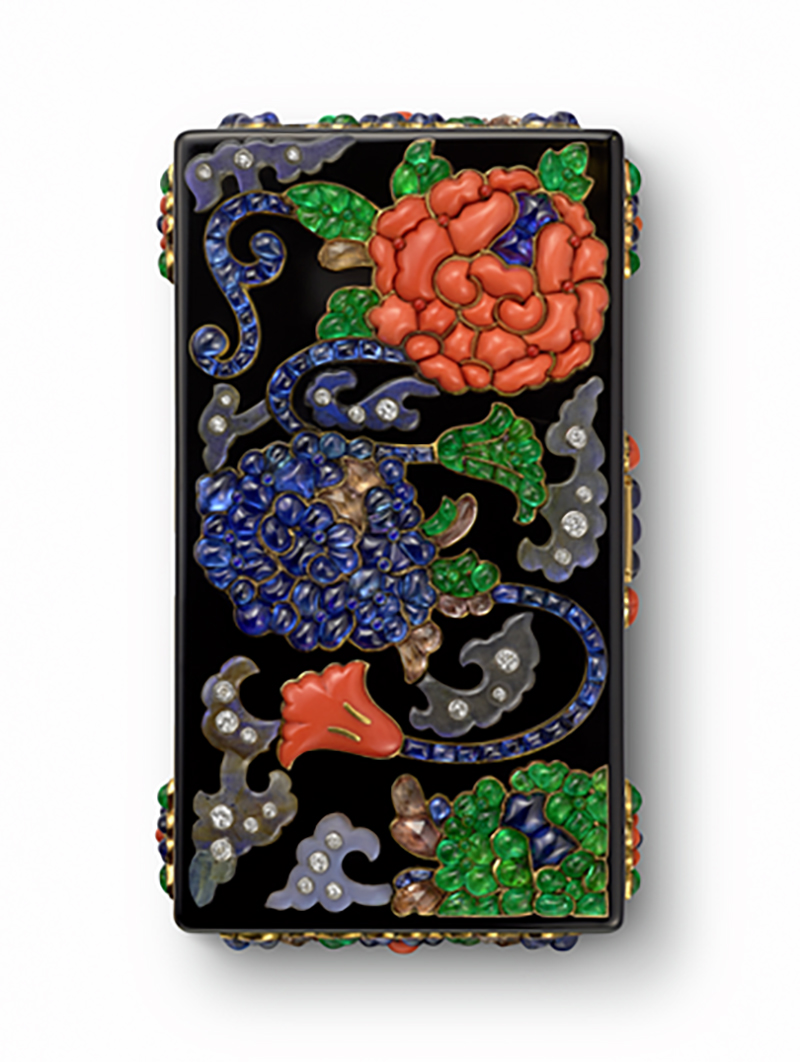
Vanity case, Cartier Paris, (1927). Photo: Nils Herrmann; Courtesy Cartier
The pieces that most reflect the relationship include a mystery clock from 1923 featuring a crystal Billiken, a vanity case from 1927 with a bejeweled floral motif, a dazzling diamond Japanese brooch from 1907 depicting a knot, and a circa-1925 bracelet depicting cherry blossoms in diamonds, emeralds, and rubies. The connections with the country come into even sharper focus with the scenography, which was created by Adrien Gardere Studio and includes elements such as tatami mats and washi papers to connect the Cartier pieces back to Japan along with a quiet, contemplative nature aligned with the culture.
Other pieces on display connect with the Japanese appreciation of nature such as two wisteria diamond brooches from 1903 that are the reflected in a six-panel folding screen of wisteria by Hiroshi Sugimoto titled Wisteria of Kasuga Grand Shrine (2022). There’s also a section of Cartier pieces, which all share a history of participating in other shows in Japan, including the Scroll tiara of Elizabeth, Queen of the Belgians.
Then, there are the blockbusters that are icons of Cartier: Mexican actress Maria Felix’s legendary snake necklace, Grace Kelly’s engagement ring centered on a 10.46-carat emerald cut diamond; and a special-order necklace commissioned by the Maharaja of Patiala in 1928 and recently restored.
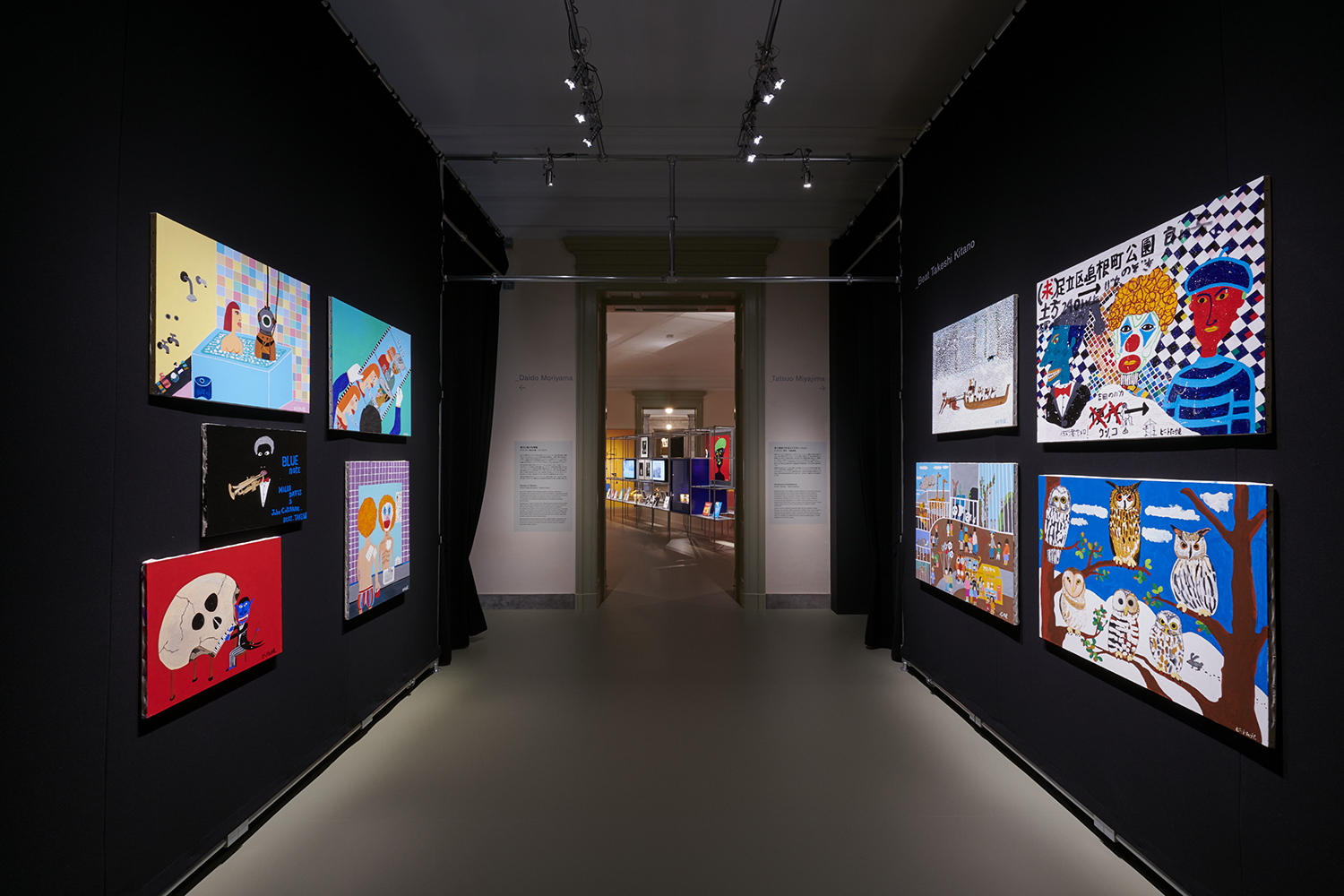
Installation view of “Half-Century of Cartier in Japan and Beyond: An Everlasting Dialogue of Beauty and Art" at Tokyo National Museum. Photo: Courtesy Cartier
The second part of the show is equally impressive celebrating the Japanese artists that the Fondation Cartier and the maison has supported and exhibited over the years. In addition to the Sho special commission, works by Takashi Murakami, photographer Rinko Kawauchi, and artistic creations by fashion designer Issey Miyake offer a unique lens on the immense creative output and talents of Japan that Cartier has helped share with the Western world.
“The Fondation Cartier has often pioneered the discovery of Japanese artists who were then unknown outside Japan, whether emerging artists or creators who were recognized in Japan but had never exhibited in the West,” says Kelmachter. “And this was done not for the sake of novelty, but more in a spirit of curiosity and that very special way of listening to artists, giving them carte blanche and inviting them to explore new creative paths.”
All of these pieces come together to form such a complete story of Cartier and Japan encapsulated by the idea of musubi, which means knot but more poetically links to the power and spirit of being bound together.
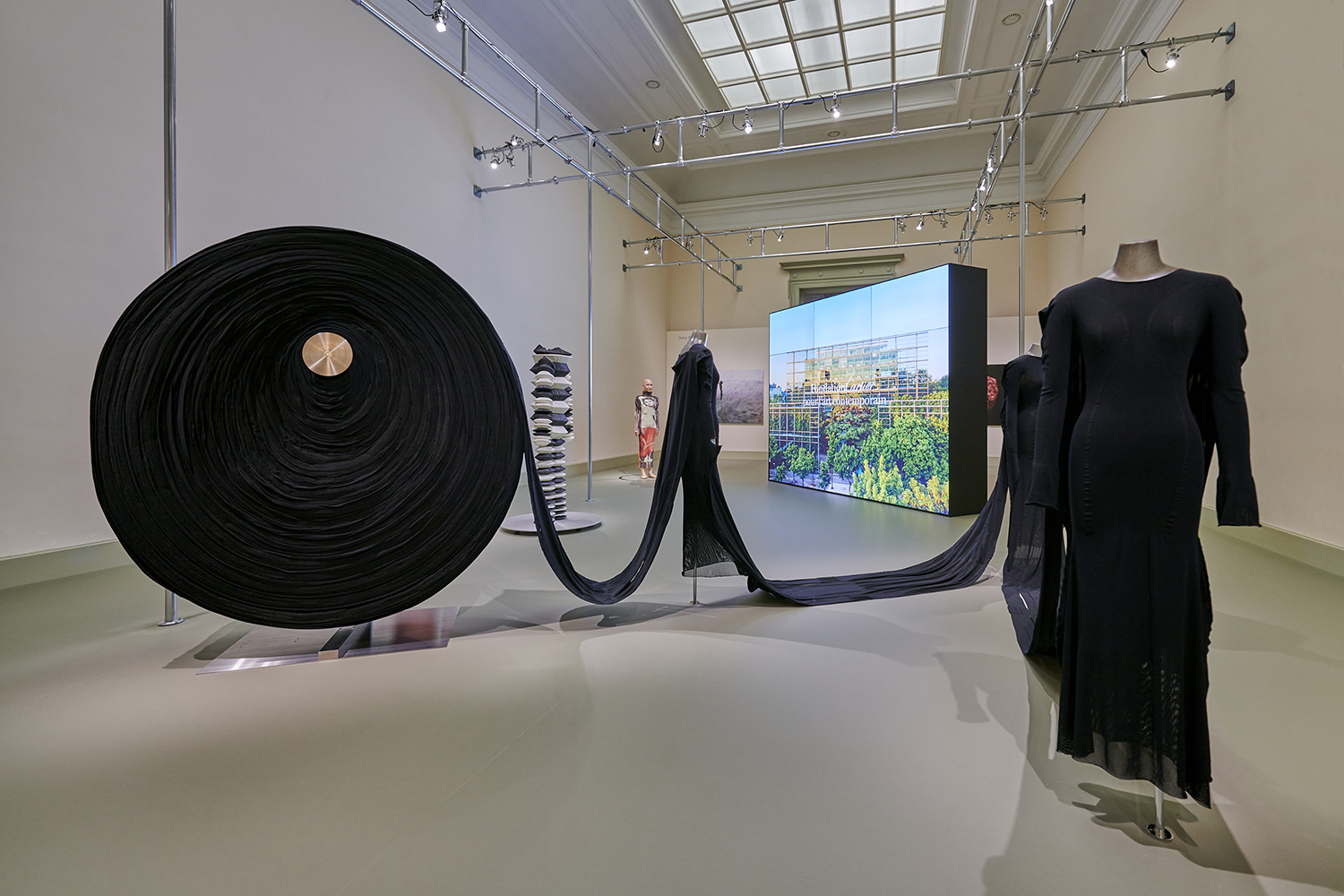
Installation view of “Half-Century of Cartier in Japan and Beyond: An Everlasting Dialogue of Beauty and Art" at Tokyo National Museum. Photo: Courtesy Cartier
“Half-Century of Cartier in Japan and Beyond: An Everlasting Dialogue of Beauty and Art” runs through July 28.


